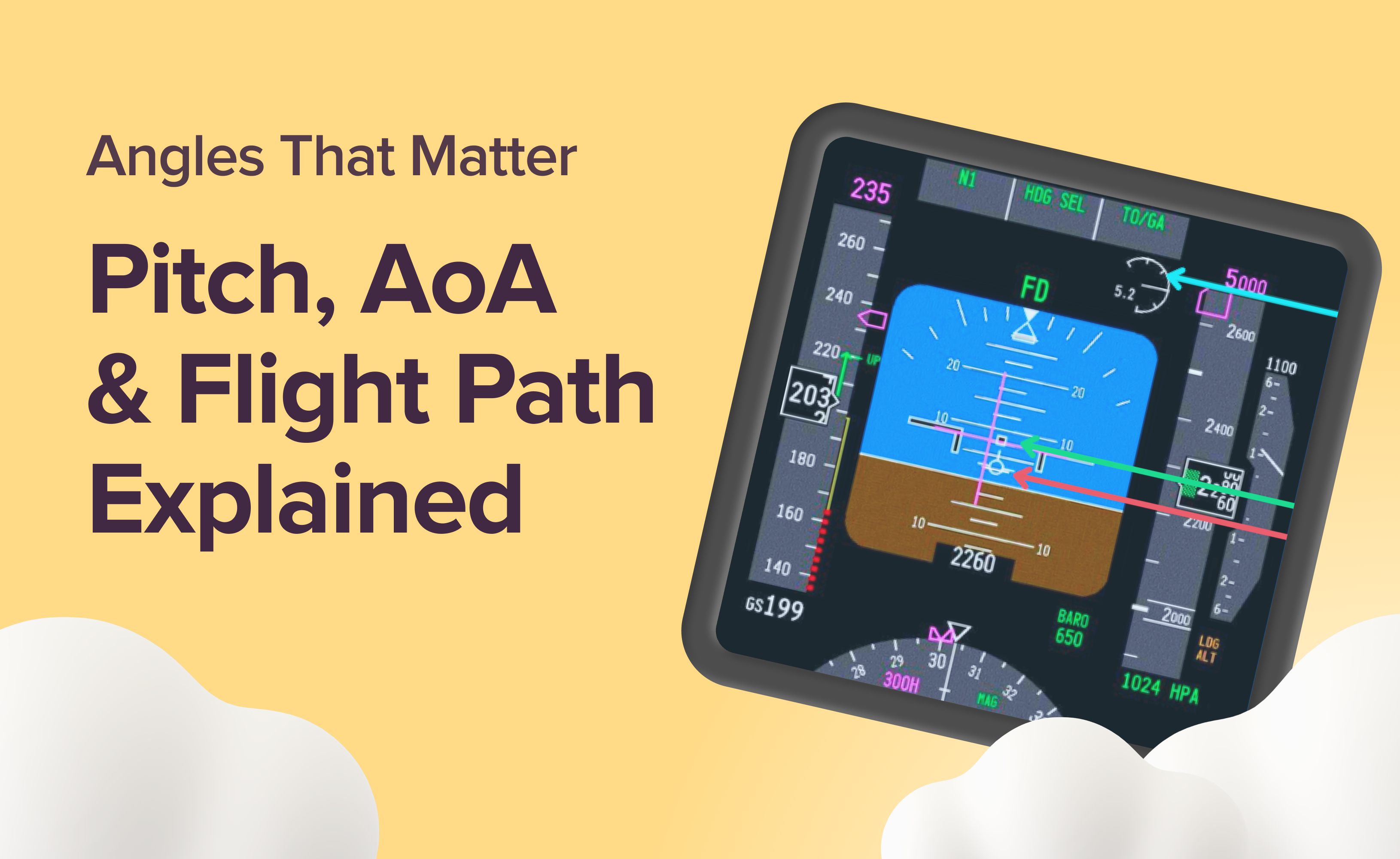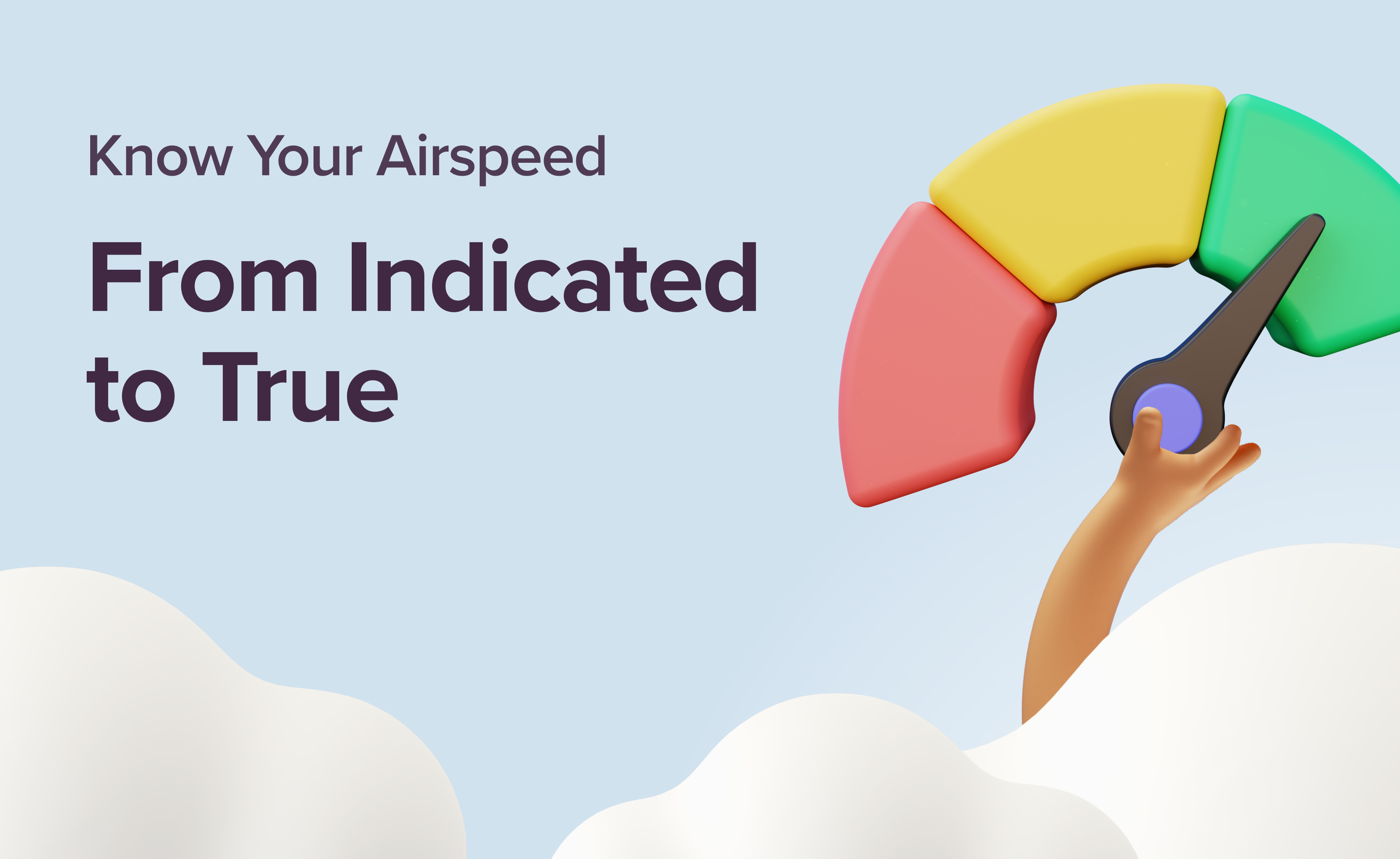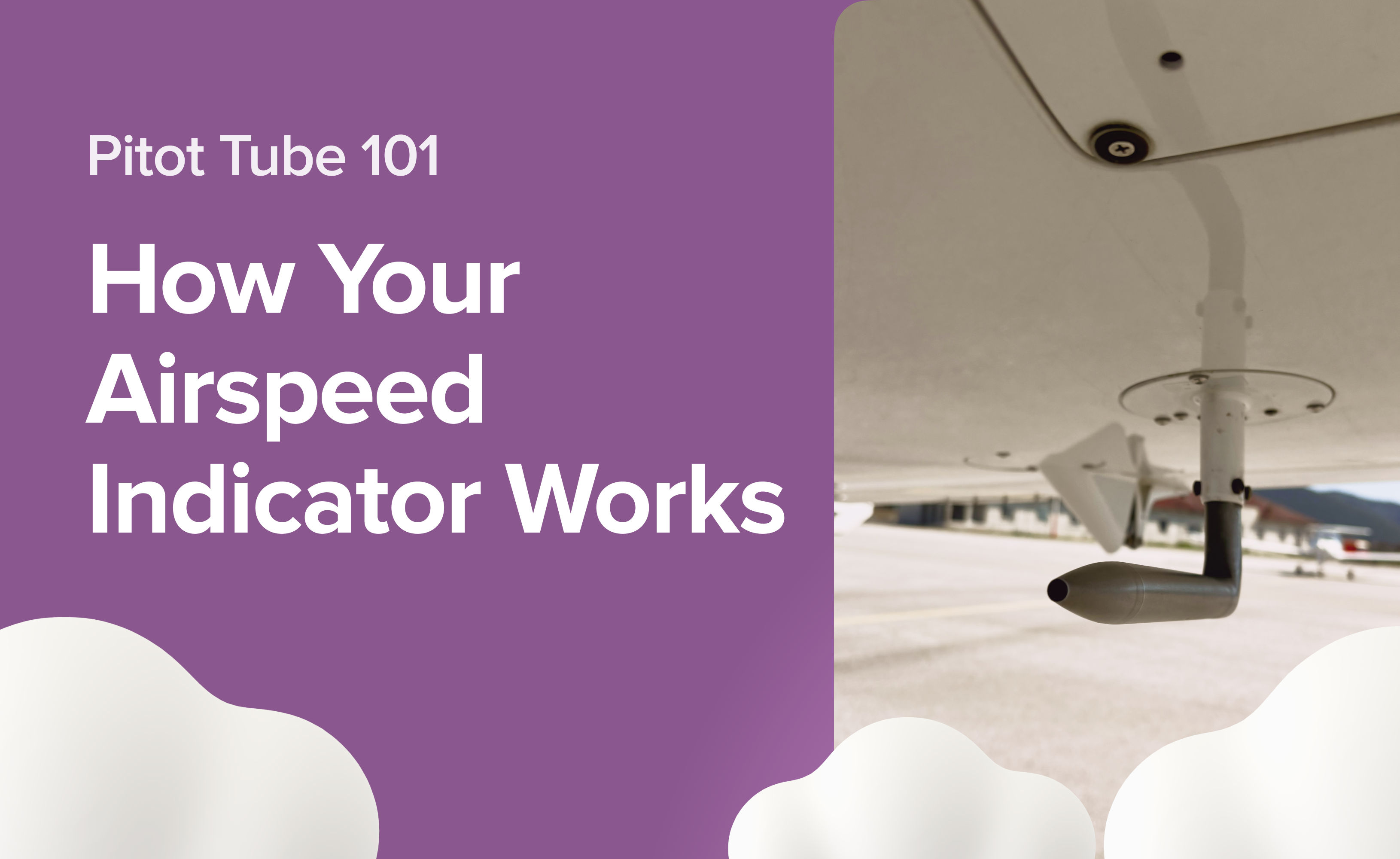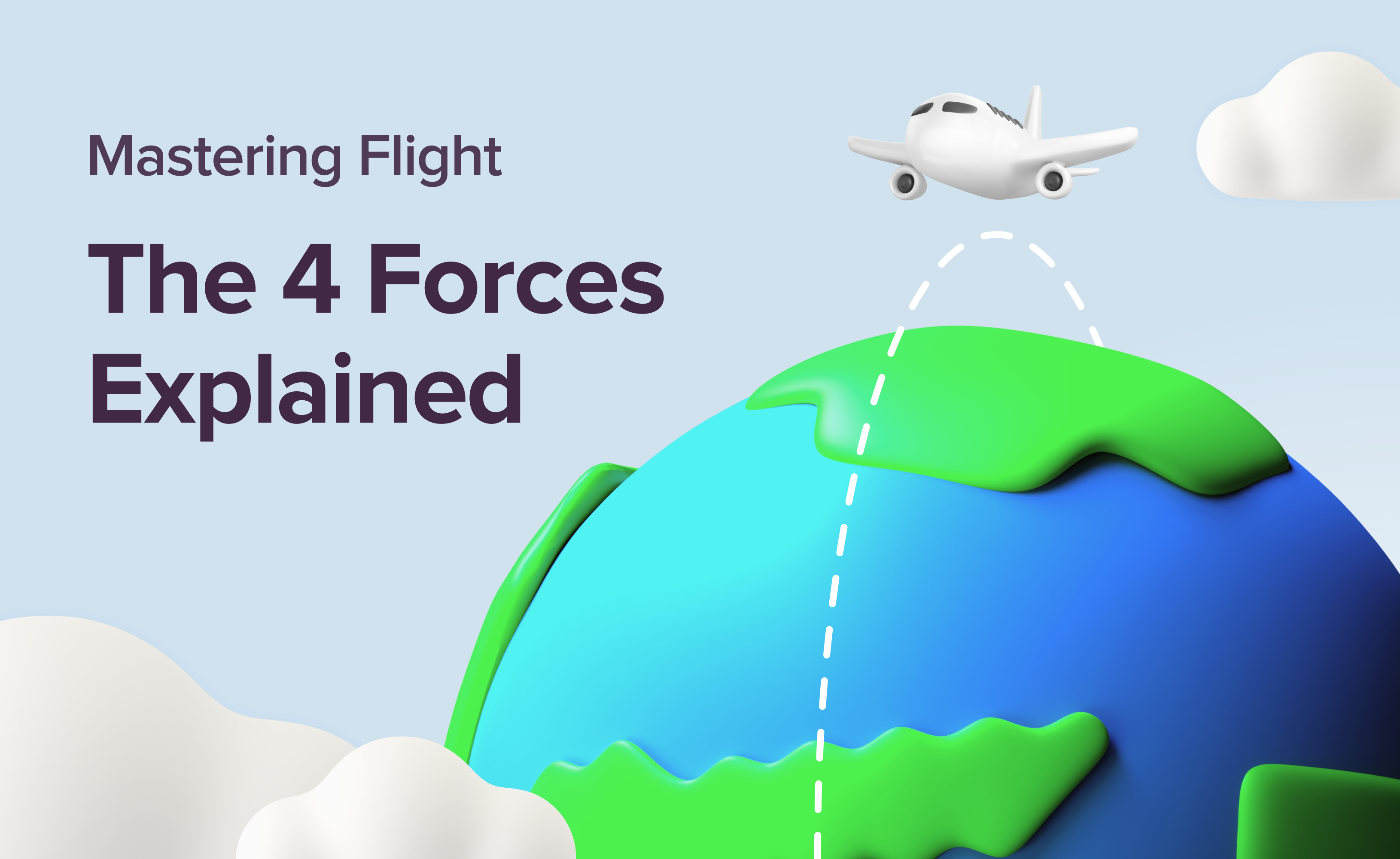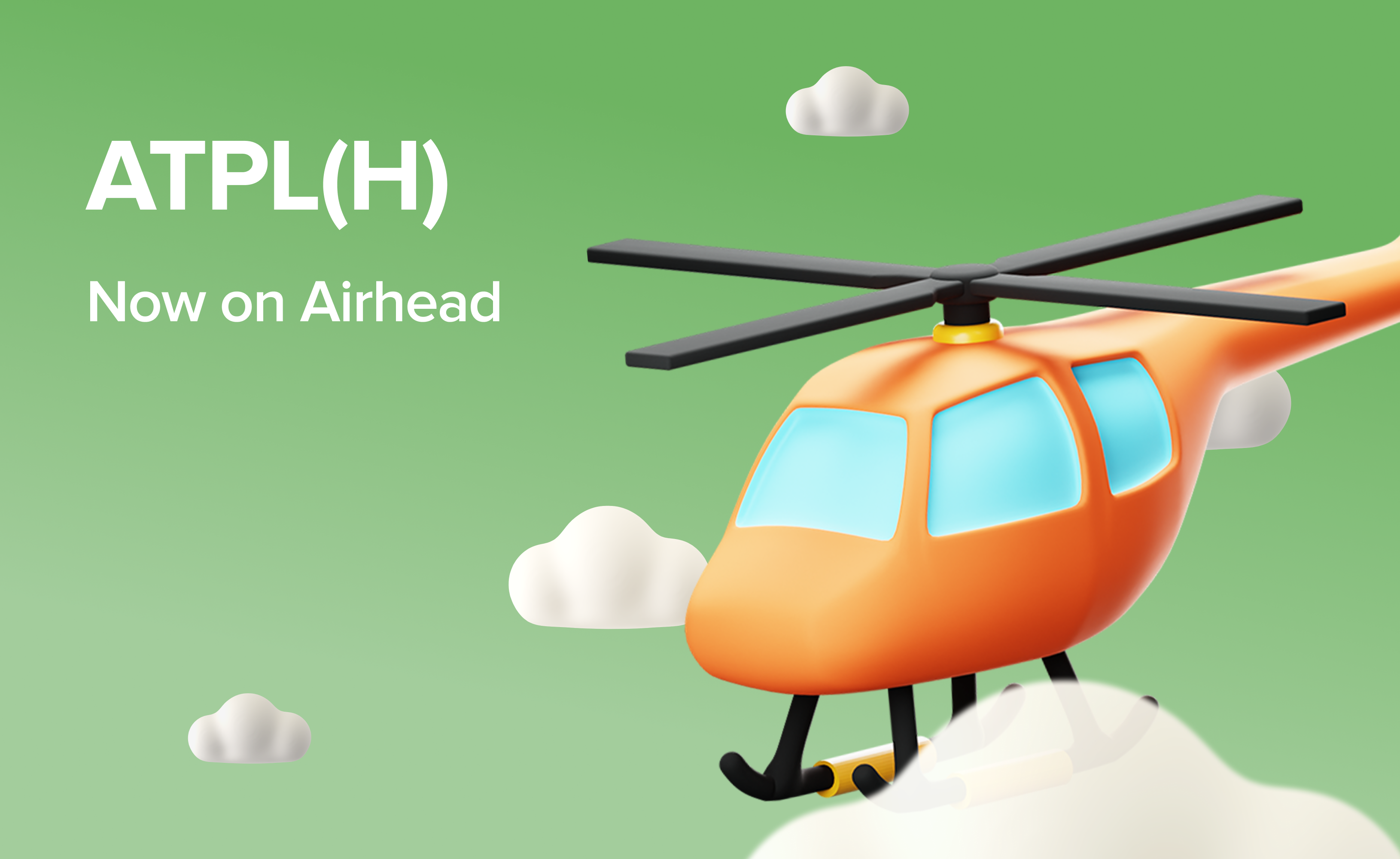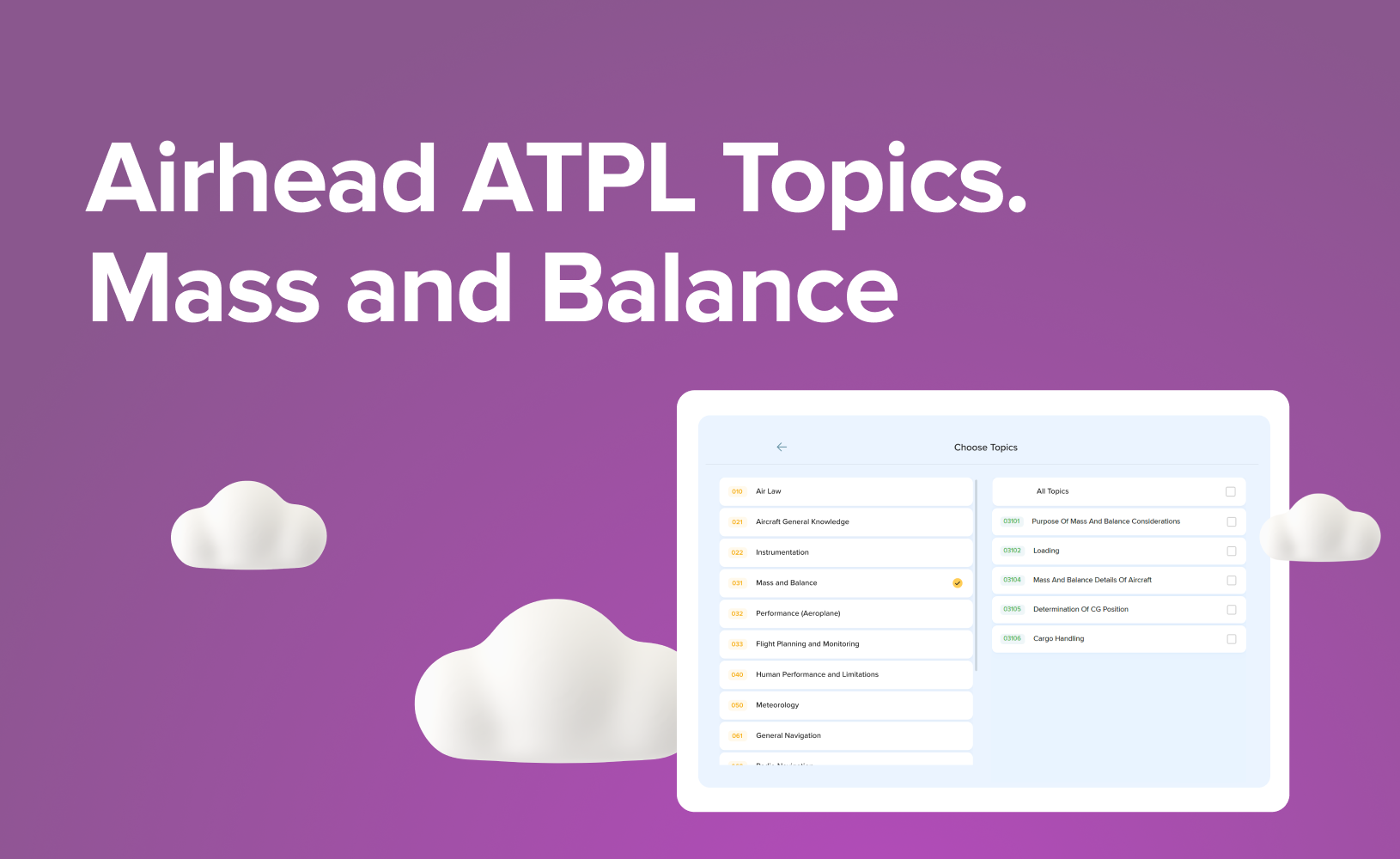Your Sky Guide: 10 Cloud Types to Know
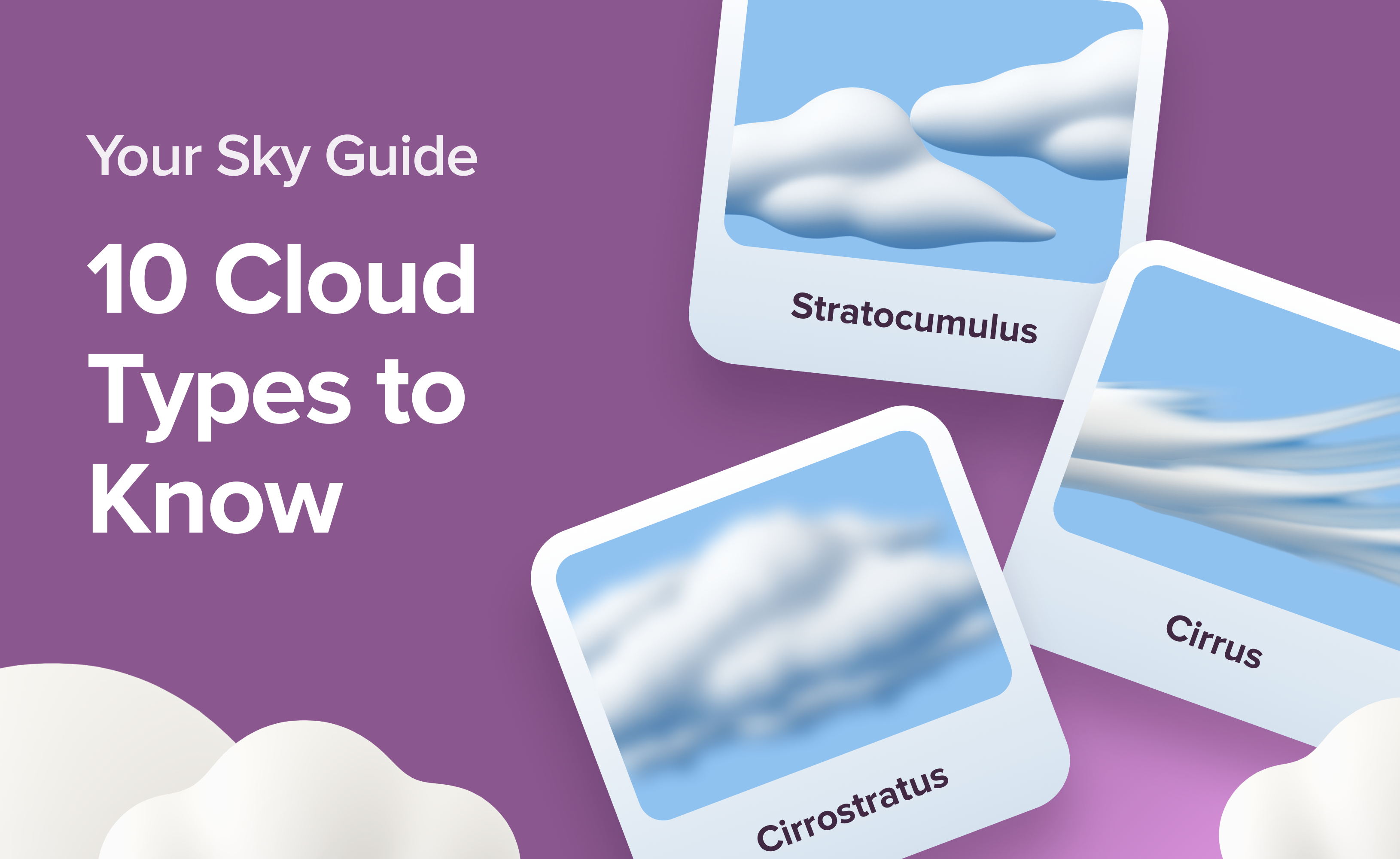
In aviation, clouds aren’t just pretty backdrops — they’re critical to safety, visibility, turbulence, and flight planning. Some clouds signal calm cruising. Others are massive sky traps hiding icing, turbulence, or violent storms. Knowing how to read the sky is just as important as reading your instruments. So in this post, we’re breaking down the cloud types every pilot should understand, from fair-weather fluff to towering monsters.
By the end, you won’t just fly through clouds — you’ll think through them.
Beyond the clouds lies the true power of the sky, shaping every flight. Master aviation weather and transform uncertainty into confidence. Dive into our Weather Whiz: New Pilot's Guide to Forecasting now.
How Do Clouds Form?
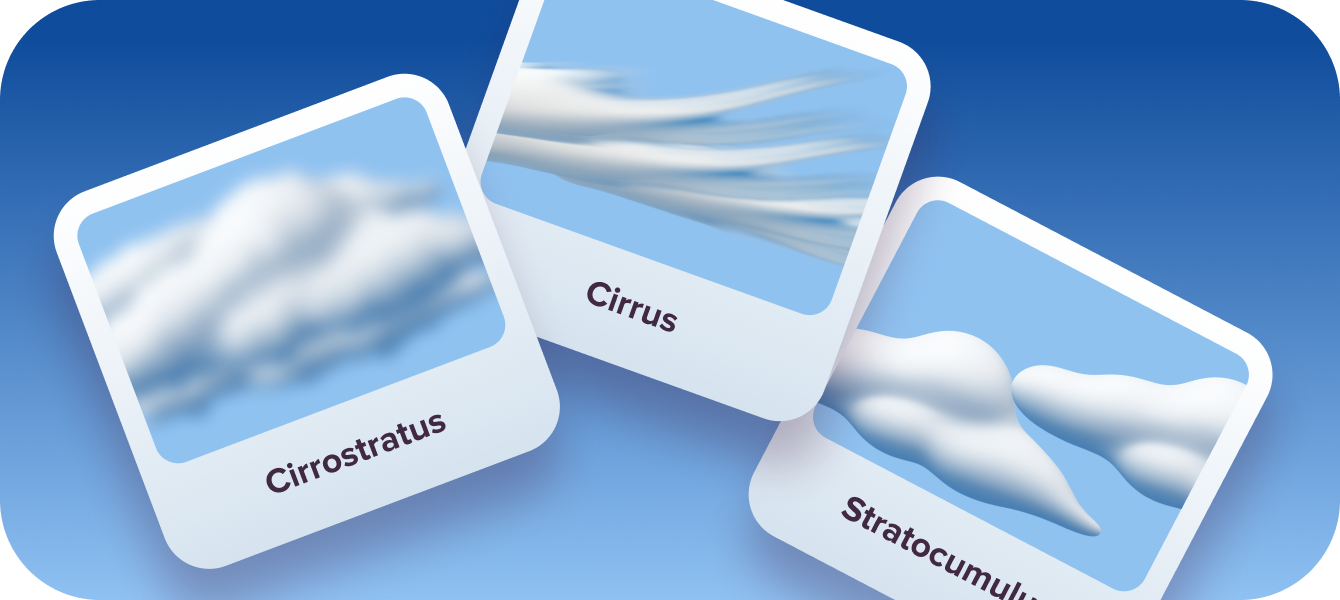
For anyone whose head is always in the sky, understanding clouds is more than daydreaming — it’s practical pilot knowledge. Every cloud is born from the same basic principle: rising air cools, condenses, and forms visible moisture.
The Basic Recipe of Cloud Formation
Warm air rises. This can happen because the ground heats it (convection), because it's pushed up by mountains (orographic lifting), or because it's forced over cooler air (frontal lifting).
As it rises, it cools. Air pressure decreases with altitude, so the rising air expands and cools, typically around 3 °C per 1,000 feet (the dry adiabatic lapse rate).
It reaches dew point. If the cooling air reaches its dew point, water vapour condenses around microscopic particles (like dust or salt) called condensation nuclei.
Boom — cloud. Millions of these droplets or ice crystals hang together in a visible mass: a cloud. The shape, size, and location of the cloud depends on how and where the air is rising.
At its core, a cloud is just visible moisture — but the process that gets it there is all about air movement, temperature, and pressure.
Knowing how clouds form allows pilots to predict turbulence and icing, interpret critical VFR cloud base heights, and understand complex weather systems just by observing them from the cockpit.
What exactly is turbulence, and why does it happen? Our blog, “Ride: 4 Types of Turbulence Explained” breaks down the primary causes and classifications of this common flight phenomenon.
3 Major Categories of Clouds
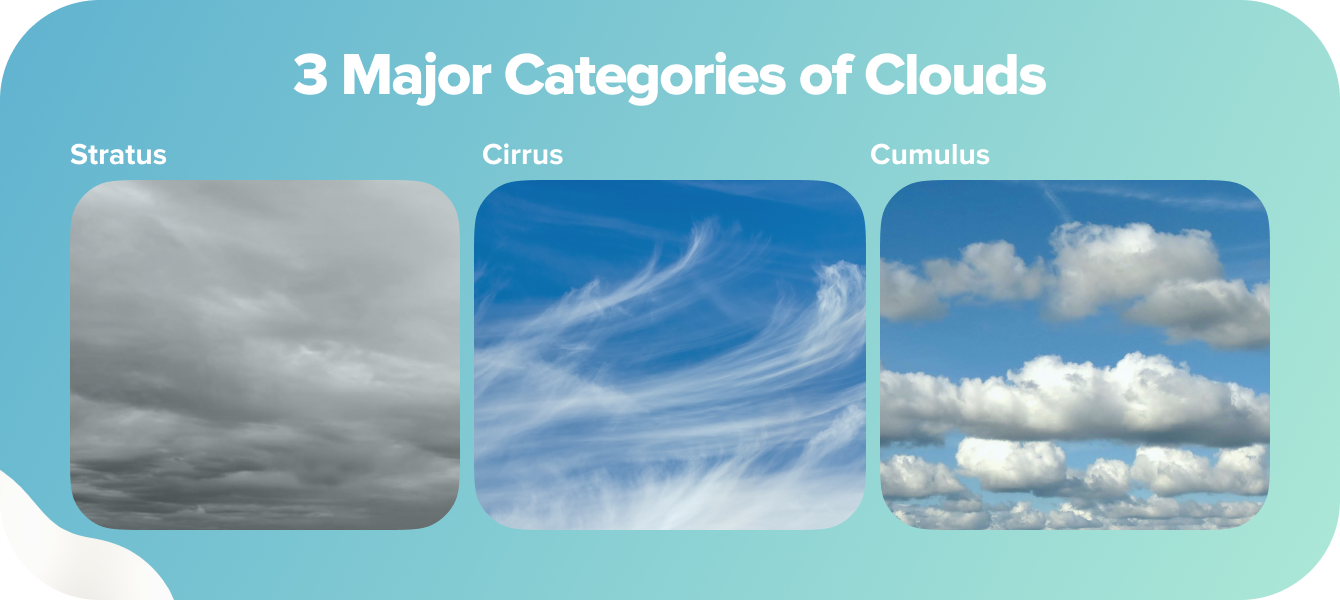
Meteorologically, clouds fall into three major categories, each with distinct characteristics. The cloud formations are classified according to their height above and appearance (texture) from the ground.
1. Cumuliform (Cumulus-Type Clouds)
Cumulo-: heap
Visual clue: Cauliflower tops = strong vertical development = rough ride ahead.
Puffy, cotton-like clouds formed by vertical convection. Usually develop from surface heating or unstable air masses. These clouds can mean turbulence. Big ones (like towering cumulus or cumulonimbus) signal strong updrafts, thunderstorms, or icing. Watch for CBs in METARs and TAFs.
2. Stratiform (Stratus-Type Clouds)
Strato-: layer
Visual clue: Grey, featureless, and low-hanging, bring your instruments.
Layered, flat clouds that spread horizontally like a blanket. They form from stable air and gentle lifting, such as warm fronts or coastal fog. Typically, such clouds allow smooth flying, but they can obscure terrain and reduce visibility. IFR conditions often hide here — think low ceilings and fog.
3. Cirriform (Cirrus-Type Clouds)
Cirro-: curl of hair, high
Visual clue: Featherlike, frequently stretch across the sky like brushstrokes.
Wispy, high-altitude clouds made of ice crystals. They form at 20,000 feet and above, typically in the upper troposphere. Usually signal fair weather, but cirrus near fronts or in streaks can be early signs of a developing storm system. They may also indicate turbulence in the jet stream.
These three cloud categories are the building blocks of every weather system you'll fly near or through. Want to dive into how they combine into larger groups? Let’s continue with the Four Major Cloud Families next.
When a low cloud touches the ground, it gets a new name: fog. Our Pilot's Guide details the 6 common fog types crucial for safe operations under both Visual and Instrument Flight Rules.
4 Cloud Family Groups
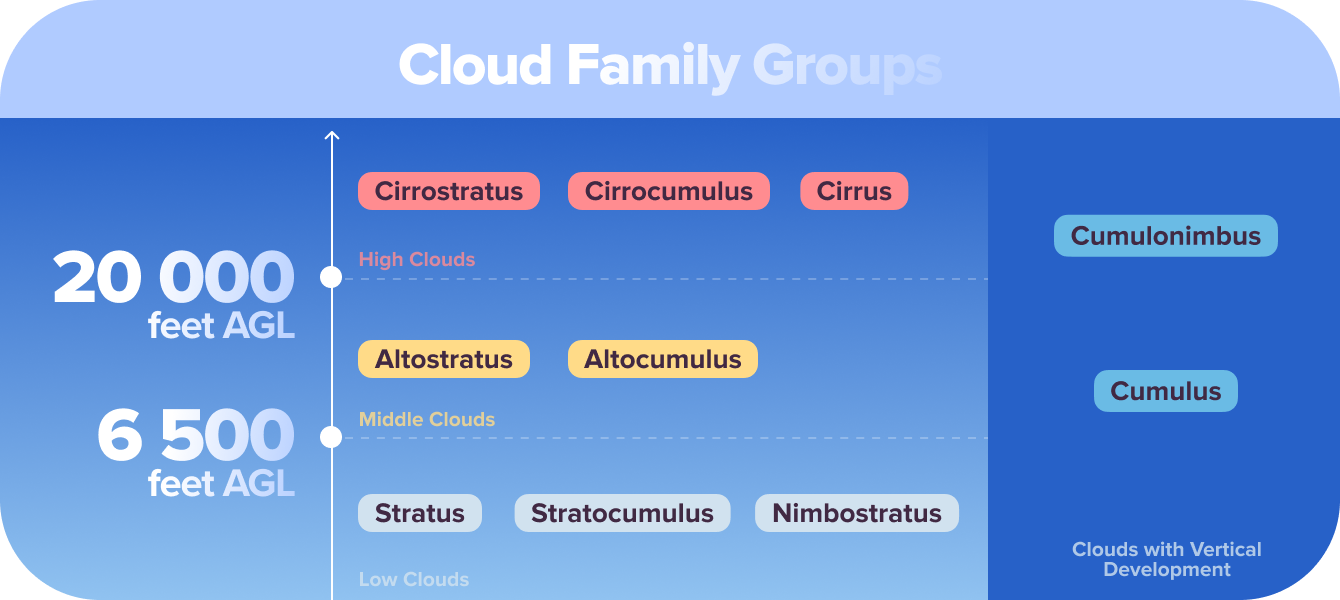
Clouds are grouped into families based on altitude, and each layer presents its own unique challenges (or calm). Think of these as the “last names” in the cloud family tree — each group revealing where in the sky the clouds live and what kind of flight conditions they might bring.
1. High-Level Clouds (Above 20,000 ft)
Names: Cirrus (Ci), Cirrostratus (Cs), Cirrocumulus (Cc)
Composition: Ice crystals
Visual clue: Thin, wispy, or veil-like sheets high in the sky
High-level clouds generally indicate stable air and fair weather. But they can also be a sign of an approaching warm front or upper-level moisture. Typically, expect smooth flying, but jet stream turbulence is a possibility.
2. Mid-Level Clouds (6,500–20,000 ft)
Names: Altostratus (As), Altocumulus (Ac), Alto-: mid.
Composition: Water droplets, sometimes supercooled water or ice
Visual clue: Duller and more textured than high clouds; sun may appear “fuzzy”
Mid-level clouds may bring moderate turbulence and light icing. Altostratus often reduces visibility and can lead to overcast skies. Altocumulus may appear as cotton balls and occasionally signal instability.
3. Low-Level Clouds (Surface to 6,500 ft)
Names: Stratus (St), Stratocumulus (Sc), Nimbostratus (Ns), Nimbo-: rain, precipitation.
Composition: Water droplets
Visual clue: Thick, grey, and layered like a wet blanket over the terrain
This is Instrument Flight Rules territory: low ceilings, mist, drizzle. Low-level clouds can produce continuous precipitation, especially nimbostratus. Stratocumulus may be bumpy below and smooth above
4. Clouds with Vertical Development
Names: Cumulus (Cu), Towering Cumulus (TCu), Cumulonimbus (Cb), Cumulo-:heap, vertical.
Composition: Water droplets and ice (Cb)
Visual clue: Puffy, billowing towers. If it has an anvil top? Divert immediately
Be prepared for lightning, wind shear, turbulence, and icing. Cumulus can be fair weather… or a brewing thunderstorm. Cumulonimbus = no-go zone. Thunderstorms, microbursts, hail are likely.
Quick Tip for Remembering
Low clouds = visibility issues.
Mid clouds = possible rain, watch for icing.
High clouds = weather on the way.
Towering clouds (Cb) = immediate threat. Don’t flirt with them.
Master safe Visual Flight Rules across Europe. Our guide, “See and Be Seen: Rules for Safe VFR Flying,” details the essential rules for confident piloting.
What Does Cloud Colour Tell You?
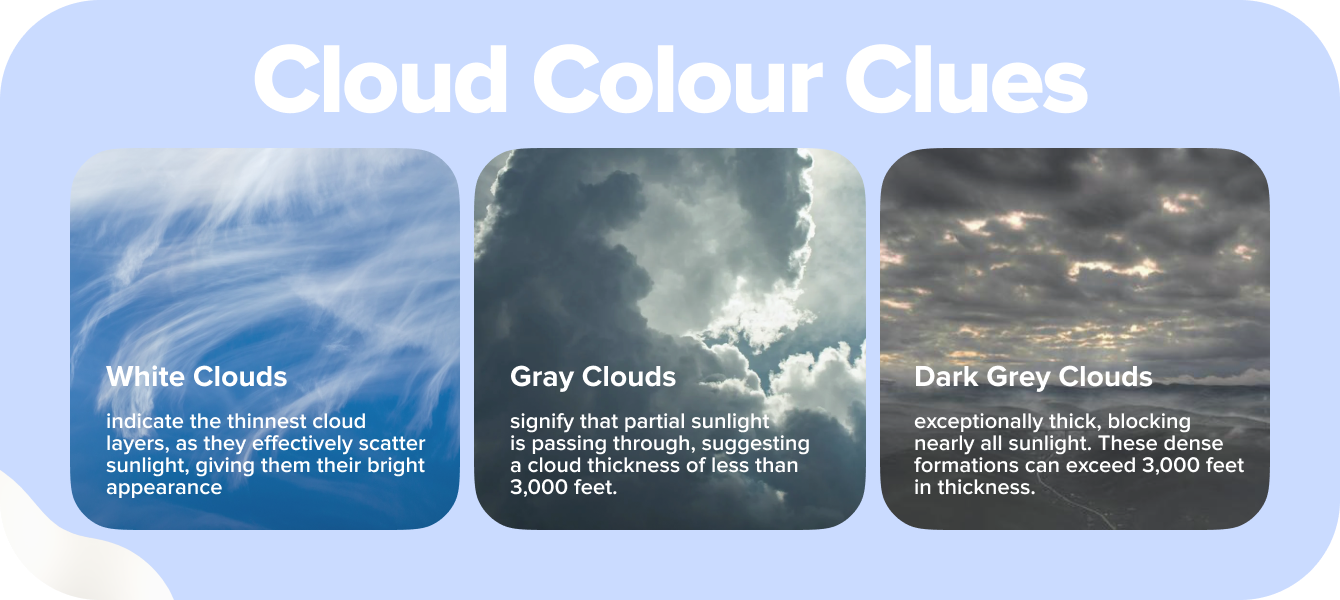
Besides type and height, cloud colour also tells us a lot about the weather. Understanding these nuances can enhance your situational awareness. Here's what each shade reveals:
White: These clouds are typically the thinnest, appearing bright white as they efficiently scatter incoming sunlight.
Gray: When a cloud appears gray, it means only some sunlight is penetrating its depth. This usually indicates the cloud is less than 3,000 feet thick.
Dark Gray: The deepest, almost black clouds are dense enough to block nearly all sunlight. Such a dark colour signifies a considerable thickness, generally exceeding 3,000 feet.
How Fast Does Air Travel Inside a Cloud?
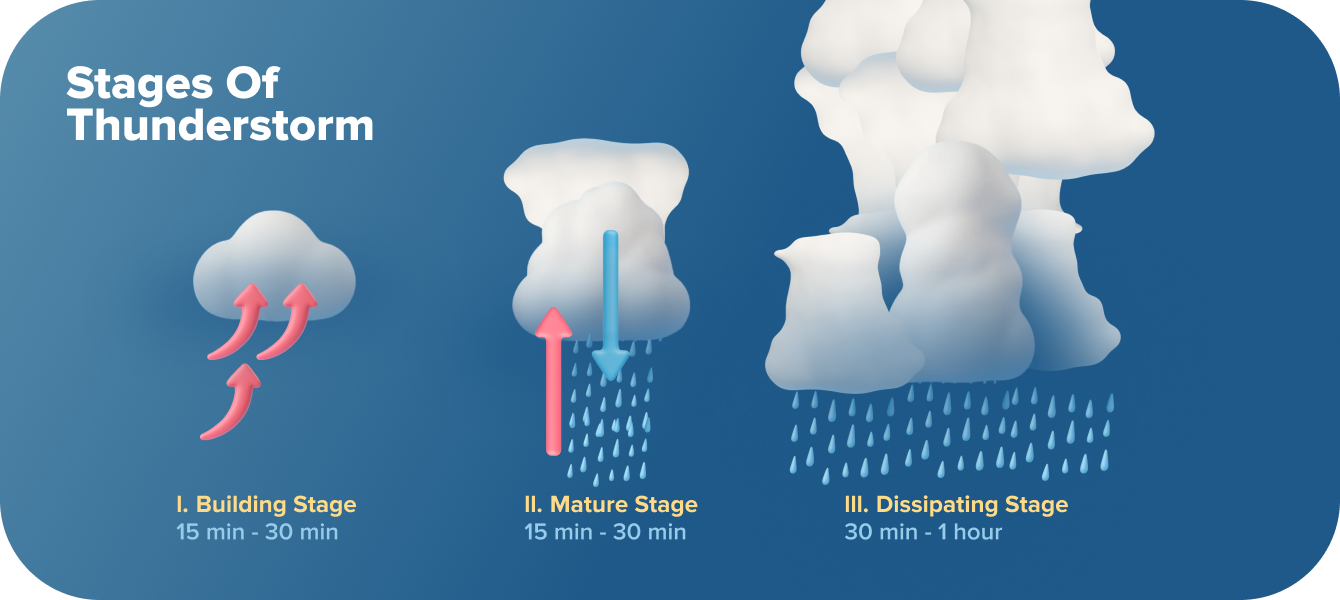
Clouds may look fluffy and slow-moving from a distance — but inside, they can be dynamic and dangerous. Especially in towering clouds, air movement is a major factor in turbulence, icing, and thunderstorm development. When clouds create rapidly and vertically (think cumulus turning into towering CBs), they signal instability — and that’s your cue to give them a wide berth.
Cloud Currents Speed
In fair weather, cumulus clouds, updrafts and downdrafts can range from 200 to 1,000 feet per minute (fpm).
In towering cumulus (TCU) or cumulonimbus (CB) clouds, vertical air movement can exceed 3,000 to 6,000 fpm. And in extreme cases, reach up to 10,000 fpm or more. That’s faster than some light aircraft can climb.
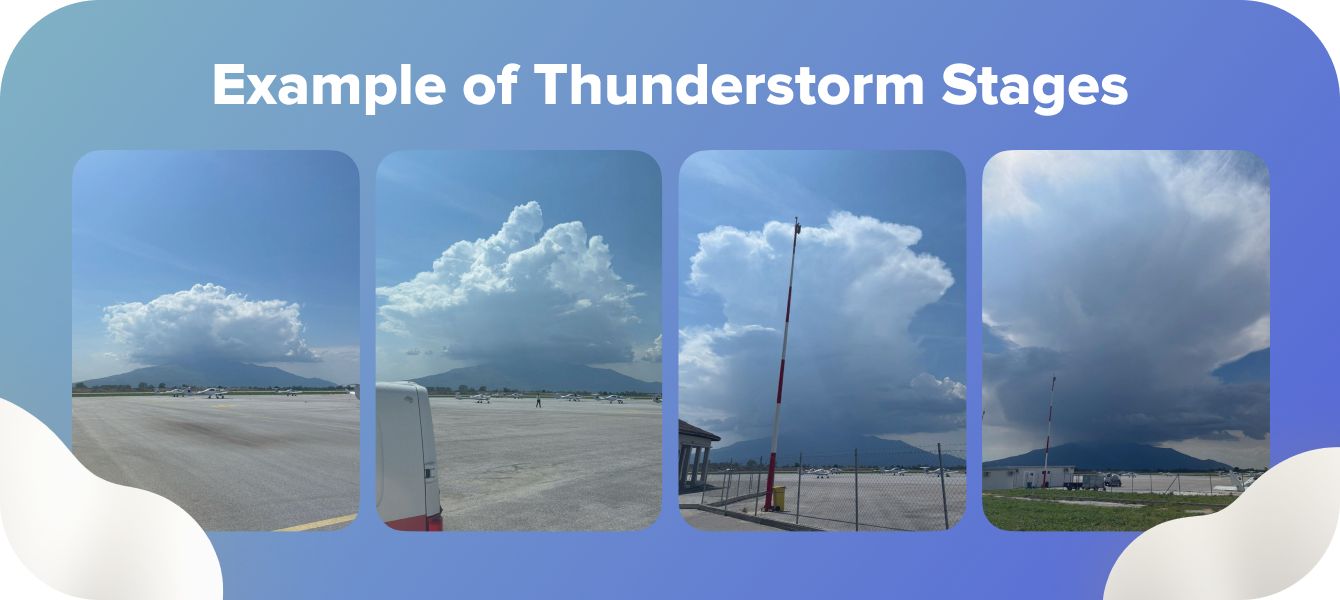
These massive vertical currents are what make CBs capable of tossing aircraft like toys (severe turbulence), triggering rapid icing conditions, and producing hail, lightning, and microbursts.
Airhead Note
Don’t fly through building cumulus. Even before a storm forms, rising air within the cloud can make for a very bumpy ride.
Know your limits. Your aircraft’s climb or descent rate might not be able to compete with what’s happening inside a storm.
Avoid CBs by at least 20 NM — especially when flying around thunderstorm cells.
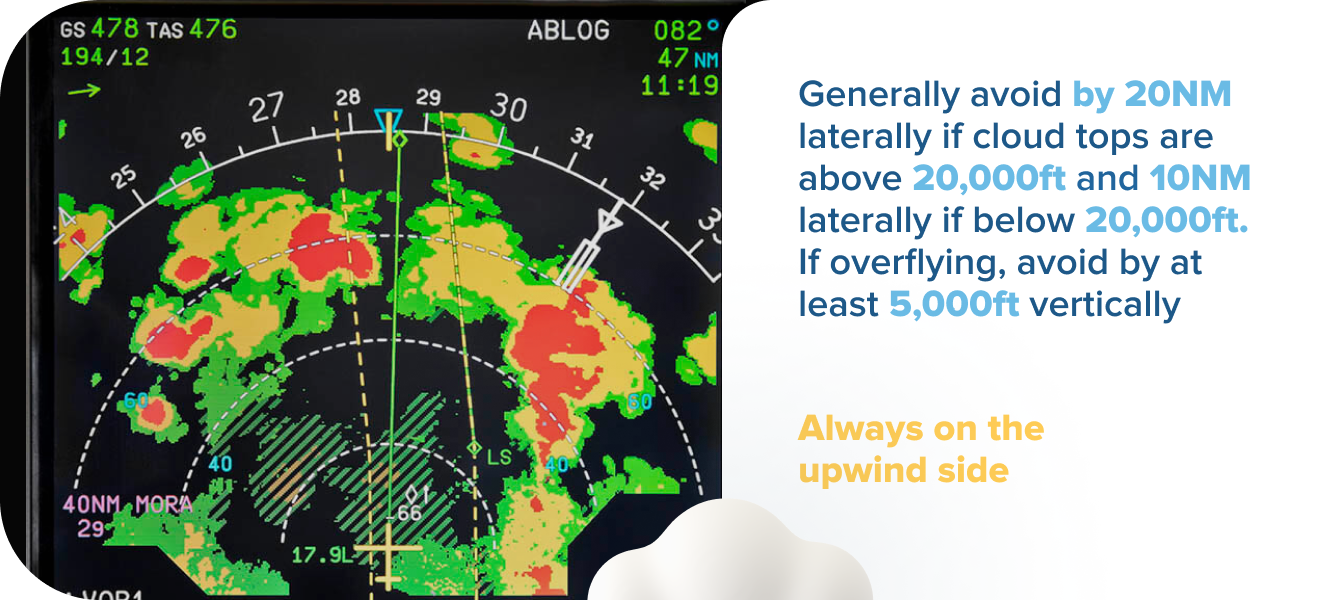
How to Measure Cloud Cover?
For flight planning and safety, understanding the extent of cloud coverage is vital. It directly impacts critical go/no-go decisions and operational strategies. When reviewing a pilot weather report, these are the standard terms used to describe cloud density:
Clear: Denotes an absence of clouds.
Few Clouds: Indicates clouds covering 1/8 to 1/4 of the sky.
Scattered Clouds: Refers to clouds covering 3/8 to 1/2 of the sky.
Broken Clouds: Means clouds cover 5/8 to 7/8 of the sky.
Overcast: Signifies 100% cloud coverage of the sky.
Did you know contrails are clouds too? These narrow, elongated clouds form as jet exhaust condenses in cold, high-altitude air, signalling upper-level humidity and wind drift. Learn more about these condensation trails in our blog, “Lines in the Sky: The Science Behind Contrails”.
The 10 Main Types of Cloud Every Pilot Should Know
Now that we’ve covered cloud categories and family groups, let’s get specific. These ten cloud types are the main characters in the sky, each with its own look, altitude, and impact on flying.
Here’s your visual weather briefing from low-level drizzle-makers to towering storm factories.
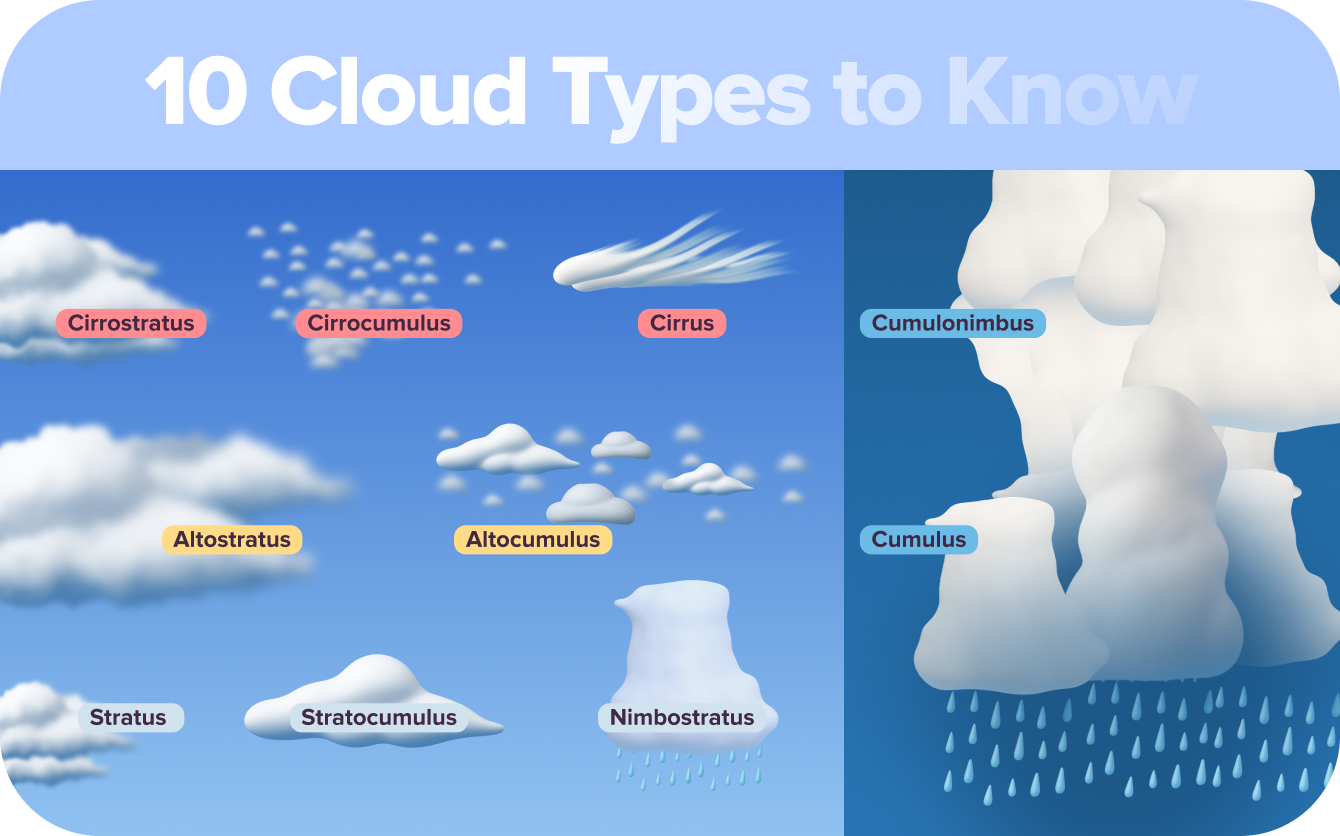
1. Stratus (St)
Low-level, flat and grey. Think of stratus as a sky full of fog that didn’t quite reach the ground. Often brings drizzle or light mist. Not dramatic, but not ideal for VFR either.
2. Stratocumulus (Sc)
Low, lumpy, and typically greyish. A mashup between stratus and cumulus. These clouds may look like a soft blanket, and while they usually don’t bring heavy rain, light drizzle is common.
3. Nimbostratus (Ns)
Thicker, darker, and wetter. When altostratus grows downward and gets heavy with moisture, you get nimbostratus — a steady rain machine. Low bases, poor visibility, and no fun for small aircraft.
4. Cumulus (Cu)
Classic cotton balls, low-level. Good weather cumulus are a VFR pilot’s best friend. But when they build up, they can quickly become turbulent. Known for short, sharp, localised showers.
5. Altostratus (As)
Mid-level, greyish sheets. These are your long-haul rainclouds. Cover large areas and usually mean sustained precipitation is coming. Great at soaking the countryside.
6. Altocumulus (Ac)
Mid-level, fluffy but orderly. They often look like rows of sheep across the sky. May signal instability. Sometimes linked to turbulence or light showers.
7. Cirrostratus (Cs)
High, wispy veils. These ice crystal clouds create those beautiful halos around the sun or moon. A telltale sign that a warm front is approaching.
8. Cirrocumulus (Cc)
High-altitude ripple patterns. Small, grainy clouds that don’t bring rain but may hint at turbulence aloft. They’re rare and don’t last long.
9. Cirrus (Ci)
Feather-light and way up high. These streaky clouds cruise above 20,000 feet at temps of -40 °C or colder. They don’t bring weather, but their presence typically signals what’s coming next.
10. Cumulonimbus (Cb)
The big one. Towering from low levels up into the stratosphere. Thunder, lightning, hail, microbursts — Cb clouds are thunderstorm generators. If you see one, your new heading should be away from it.

Cloud Types Cheat Sheet for Pilots
Cloud Type | Level | What It Looks Like | What to Expect |
|---|---|---|---|
Stratus (St) | Low | Grey, uniform layer | Low ceilings, drizzle, poor visibility |
Stratocumulus (Sc) | Low | Lumpy, grey patches | Usually benign, can bring light rain |
Nimbostratus (Ns) | Low to mid | Thick, dark layer | Continuous rain, poor VFR conditions |
Cumulus (Cu) | Low | Fluffy cotton balls | Fair weather unless growing — turbulence possible |
Altostratus (As) | Mid | Grey/blueish sheet | Rain likely, reduced visibility, dull lighting |
Altocumulus (Ac) | Mid | Patches of small white clouds | May signal instability, some turbulence |
Cirrostratus (Cs) | High | Thin, veil-like, halo-producing | No direct impact, but indicates warm front ahead |
Cirrocumulus (Cc) | High | Rippled or grainy texture | Harmless, but may suggest high-altitude waves |
Cirrus (Ci) | High | Wispy, feathery streaks | No danger, but often precedes frontal systems |
Cumulonimbus (Cb) | All levels | Towering, anvil-shaped | Thunderstorms, turbulence, hail, windshear — AVOID |







